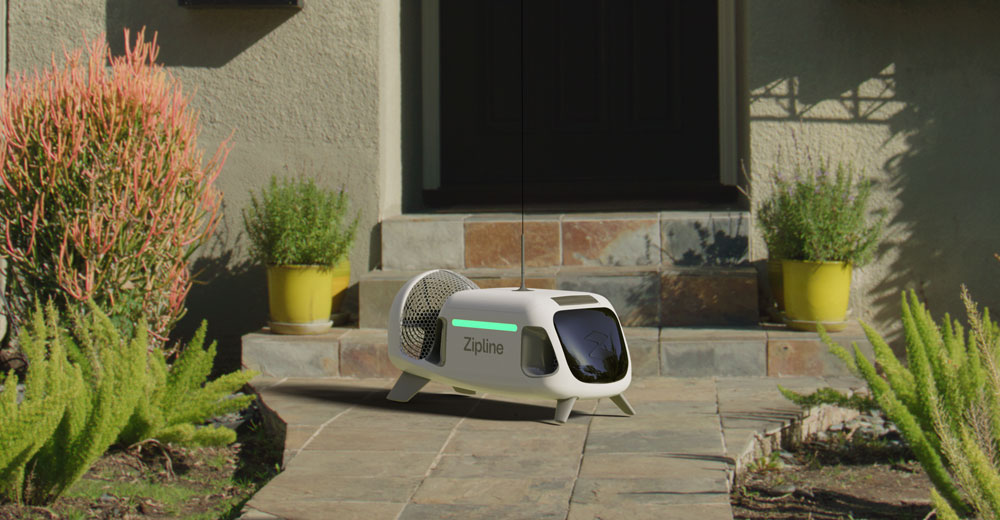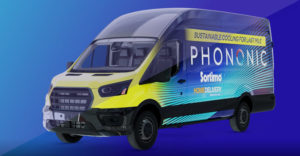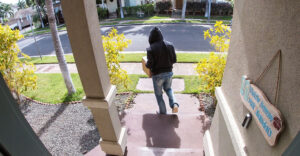Delivery by drone of packages to the doorstep of consumers has been slow in coming, but 2024 could be the year the technology finally takes flight.
Zipline, a drone delivery outfit in San Francisco, is set to pull the chocks away from a handful of projects in U.S. cities next year, with plans to be flying in 15 burgs by 2025, according to a report by Yahoo Finance.
Although drones have been making deliveries around the world for more than a decade, it’s been mostly a niche business limited to emergencies and delivery of medical supplies. However, the FAA opened the door to broader use of unmanned aerial vehicles with a rule change in September.
Up to then, the FAA required delivery drones to be within the eyesight of ground observers stationed along the drone’s route. In the fall, the agency granted an exemption to Zipline and two other drone firms to make commercial deliveries without visual observers.
The rule change, noted Rob Enderle, president and principal analyst at the Enderle Group, an advisory services firm in Bend, Ore. “opens the door to eventual autonomous drone delivery, which will be critical to scaling the technology both from a cost and a staffing standpoint.”
This exemption from the FAA represents a monumental shift for logistics and equitable access in the U.S., Zipline declared in a post on its website.
It builds the foundation for Zipline to scale to deliver food, medicine, consumer goods, and other supplies to millions of Americans on-demand and to do so in an environmentally conscious way, resulting in 97% fewer emissions per delivery than a gas-powered vehicle; it added.
Rules Needed, Not Exemptions
However, Adam Robertson, chief technology officer at Fortem Technologies, an airspace awareness, security, and defense company in Pleasant Grove, Utah, maintained that “exemptions” have been holding up the development of the industry for years.
“It is taking far longer than the tech community ever imagined to get to drone delivery,” he told TechNewsWorld. “For drone delivery to go mainstream, we have to have enabling regulation, not flying by special exemption.”
Among those who envisioned drone delivery developing rapidly was Amazon CEO Jeff Bezos. On an episode of the CBS news program “60 Minutes,” some 10 years ago, he predicted Amazon would have the necessary FAA approvals for drone delivery in “four to five” years.
“He misjudged the speed at which the FAA would move,” said Tom Walker, a founder and CEO of DroneUp, a drone delivery company headquartered in Virginia Beach, Va.
“There was a lack of awareness about where the regulatory puck was going to be,” he told TechNewsWorld.
“The slowest part of this process has been and continues to be the regulatory environment,” added Robertson.
“Companies doing drone delivery in the U.S. today do it only by exemption to regulation,” he continued. “The FAA is excellent at safety for manned aviation, and there is still much work to do to safely integrate drone delivery into the national airspace.”
“It has to be drone delivery by following the rules, not by exemption to the current restrictions,” he added.
Air Traffic Control Questions
Nevertheless, the FAA’s decision to allow drone deliveries out of the sight of their operators will be important for expanding the technology.
“Today, we’re delivering to four million customers, and the biggest issue is getting the cost per delivery down,” Walker said. “In order to do that, we’re going to have to have visual out-of-sight with remote operations.”
“By Q3 of 2024, we will start doing visual out-of-sight deliveries, and it will start to scale,” he predicted.
Scaling is a problem, Enderle agreed. “It isn’t yet cost-effective due to the FAA rules and lift and launch limitations of the technology,” he said.
He added that while the drone hardware is advancing nicely, there remains the question of air traffic control.
“We are having trouble staffing the existing air traffic control system, and it seems barely able to handle commercial aircraft,” he explained. “We start putting thousands of these drones in the air without some kind of centralized control, and they could be exceedingly dangerous and potentially deadly.”
Demand Doubted
Mark N. Vena, president and principal analyst at SmartTech Research in San Jose, Calif., expressed skepticism about drone delivery of packages to consumers.
“I’m not sure there is material demand for such a capability, as companies like Amazon — and others — already do same-day delivery for many products, and few items need to be delivered via drone for immediate delivery,” he told TechNewsWorld.
“For routine deliveries,” he said, “existing systems often suffice, questioning the urgency for drone implementation.”
“Established delivery methods may adequately meet consumer needs in urban settings, raising the question of whether drone delivery’s added complexity and cost truly align with essential consumer demands,” he added.
One area where swift delivery is important, though, is meal delivery.
“We’re doing deliveries for a quick service restaurant,” Walker said. “The reorder rate is 90%, and we’re delivering in 15.9 minutes from the time the order is placed to the time it’s delivered. And you don’t have to tip a drone. Consumers really like it.”
He cited another benefit of drone delivery that his company has discovered. “Two in five Americans have experienced porch theft,” he observed. “Because we deliver to the backyard, we’ve had zero reports of porch theft.”
Simulation of a Zipline drone making a package delivery to a residential backyard.
Going the Last Mile
If there’s one sector of the economy that would welcome expanded drone delivery, it’s package delivery firms — since the technology has the potential to reduce drastically the costs of the “last mile.”
“The last mile is relatively expensive and labor intensive, plus with the increase in thefts and violence, it is becoming unsafe for drivers and costly for merchants,” Enderle said.
Walker noted that 90% of all packages delivered into neighborhoods today weigh eight and a half pounds or less, and 90% of those packages sit on a shelf within five miles of a home. “Yet we have six- and 10-ton trucks driving down aging infrastructure, with fuel and labor costs going up,” he said.
“With a drone,” he continued, “we can deliver up to 10 pounds, and instead of it costing $16 to $20 for a delivery, it’s going to cost sub $3.”
“It is Christmas 2023, and most of the Christmas shopping I did this year was delivered to my door from a delivery truck and a guy running up to my porch, dropping a package, taking a picture, and ringing the bell,” added Robertson.
“The amount of human labor involved is huge,” he said. “That final mile or two to each home is expensive in time and resources. If delivery drones can do it faster, cheaper, or gain some efficiency, it suddenly has economic viability and will begin replacing the current human-centric last-mile delivery.”
Editor’s Note: The images and video featured in this article are credited to Zipline.


























































Social Media
See all Social Media